The Omnisexual Flag serves as a dynamic symbol, celebrating the rich spectrum of sexual orientations within the LGBTQ+ community. In our examination, we delve into the layers of significance and aesthetic appeal woven into each color, exploring its historical roots and appreciating its role in promoting inclusivity and comprehension within the diverse landscape of sexual identities.

Download the Omnisexual Flag as a HR PNG or SVG.
Meaning and Symbolism
The Omnisexual pride flag, designed by @pastelmemer in 2015, is a distinctive symbol representing individuals who identify as omnisexual—those with romantic, sexual, or affectional attractions to people of all genders and sexes. While the creator did not offer an official explanation for the colors chosen, a common interpretation has emerged within the omnisexual community, providing meaning to the shades of pink, purple, and blue that adorn the flag.
The flag’s primary hues carry specific connotations that resonate with the experiences of omnisexual individuals. Pink, the first color on the flag, symbolizes attraction to women. This resonates with the inclusivity of omnisexuality, as it encompasses not just a binary understanding of gender but extends to a spectrum that recognizes and celebrates the diversity of femininity.
In the middle of the spectrum lies purple, a color representing attraction to non-binary individuals. This shade underscores the nuanced and inclusive nature of omnisexuality, acknowledging attractions beyond the traditional binary of male and female. Non-binary identities are an essential aspect of the omnisexual experience, and the purple stripe on the flag serves as a visible testament to this recognition.
Completing the trio is the blue stripe, embodying attraction to men. This inclusion emphasizes the broad scope of omnisexuality, encapsulating attractions to individuals of all gender identities. While omnisexual individuals may not be gender-blind, their attraction encompasses a spectrum that goes beyond the limitations of a binary understanding of gender and sexuality.
The creation and adoption of pride flags are significant milestones within the LGBTQ+ community, offering a visual representation of identities that may be marginalized or underrepresented. The Omnisexual pride flag serves this purpose, providing a sense of visibility, representation, and unity for those who identify with the omnisexual orientation.
Pride flags often go beyond their visual symbolism; they become powerful tools for fostering a sense of community and belonging. The omnisexual pride flag, with its distinctive combination of pink, purple, and blue, reflects the complex and multifaceted nature of omnisexuality. As with many symbols within the LGBTQ+ community, the meanings attributed to the colors are subjective and can vary among individuals.
The fluidity of interpretation is part of the beauty of these symbols, allowing individuals to find personal connections and meanings within them. The consensus interpretation mentioned earlier provides a framework for understanding the symbolism, but it is important to acknowledge that individual experiences and perspectives within the omnisexual community may lead to varied interpretations of the flag’s colors.
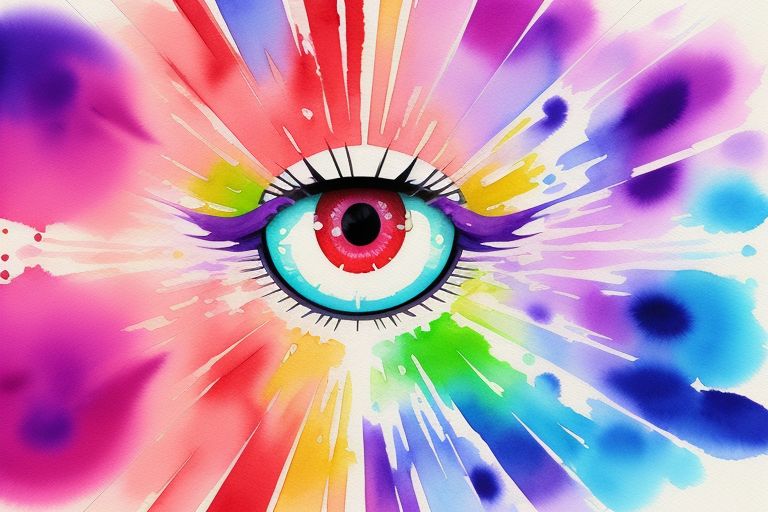
History of the Omnisexual Flag
The Omnisexual Pride Flag, designed by @pastelmemer in 2015, stands as a symbol for those who identify as omnisexual—experiencing romantic, sexual, or affectional attractions to people of all genders. The flag’s three horizontal stripes in pink, purple, and blue have come to represent attraction to women, non-binary individuals, and men, respectively, although the creator did not provide specific meanings.
Omnisexuality acknowledges and appreciates gender diversity while maintaining an inclusive attraction to various gender identities. Despite its relatively short history, the flag has become a recognized and impactful symbol within the LGBTQ+ community. Its adoption and display at events and online platforms contribute to fostering visibility, awareness, and a sense of community for individuals who identify within the omnisexual spectrum.
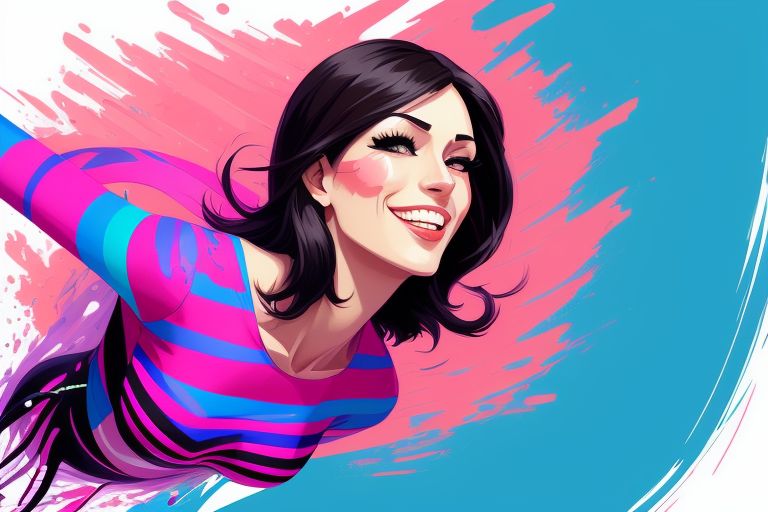
Colors and Their Representation
The Omnisexual Pride Flag, distinguished by its vibrant and nuanced color palette, serves as a visual representation of the complex and inclusive nature of omnisexuality. Comprising four distinct colors, each hue is imbued with specific meanings that articulate the diverse spectrum of attractions within the omnisexual community.
- Light Pink and Light Blue: These two colors collectively symbolize the expansive gender spectrum. Their fusion represents a commitment to inclusivity, acknowledging and embracing the rich tapestry of gender identities that exist beyond the binary. The harmonious interplay of light pink and light blue sets the stage for a flag that celebrates the entirety of the gender spectrum.
- Pink: Singularly representing attraction to femininity and women, the pink stripe is a vibrant testament to the diverse attractions within the feminine gender identity. It serves as a visual acknowledgment of the multifaceted nature of omnisexuality, encapsulating the range of attractions that span across various expressions of femininity.
- Blue: This color, standing boldly on its own, signifies attraction to masculinity and men. By incorporating blue, the flag visually communicates the expansive nature of omnisexual attractions, embracing individuals who identify with or embody masculine qualities. It reinforces the idea that omnisexuality transcends traditional gender norms.
- Dark Purple: The dark purple stripe holds a distinct and important role, symbolizing attraction to individuals whose gender falls outside the categories represented by pink and blue. This deep hue is a visual representation of the inclusivity inherent in omnisexuality, recognizing and celebrating attractions to non-binary individuals and those with gender expressions that defy traditional binaries.
Collectively, these four bold and distinct colors form a comprehensive visual language on the Omnisexual Pride Flag. Beyond their aesthetic appeal, these colors embody the philosophy of omnisexuality, promoting unity, understanding, and pride across the expansive and diverse landscape of gender identities and expressions. The flag serves as a powerful symbol that not only reflects the richness of omnisexual experiences but also fosters a sense of community and acceptance within the broader LGBTQ+ spectrum.

What are the RAL or Pantone colors of the Omnisexual flag?
The Omnisexual Flag doesn’t have official Pantone or RAL specifications, the following approximations can be used:

LIGHT PINK
Pantone: 197 C
RAL: 4010
HEX: #ff9bcd

PINK
Pantone: 219 C
RAL: 4003
HEX: #ff53be

PURPLE
Pantone: 2755 C
RAL: 5004
HEX: #250046

BLUE
Pantone: 2728 C
RAL: 5005
HEX: #675fff

LIGHT BLUE
Pantone: 2708 C
RAL: 5014
HEX: #8ca5ff
Kindly be aware that the colors mentioned here are approximations, and the exact shades may vary based on factors such as the production method, material, and lighting conditions. For accurate color representation, it is advisable to utilize physical color samples or seek guidance from a professional color matching service.
Usage and Recognition
The Omnisexual Pride Flag, with its distinctive blend of light pink, light blue, pink, blue, and dark purple, has gained notable recognition within the LGBTQ+ community as a symbol of unity and inclusivity. Its usage extends across various platforms, from social media profiles to LGBTQ+ events, where it serves as a visible declaration of one’s omnisexual identity. The flag has become a powerful tool for fostering awareness and understanding of omnisexuality, providing individuals within the community with a sense of visibility and representation.
As it continues to gain prominence, the Omnisexual Pride Flag plays a crucial role in creating spaces where individuals can celebrate their diverse attractions and find solidarity within the broader spectrum of sexual orientations. Its increasing recognition underscores the importance of diverse and inclusive symbols within the LGBTQ+ movement, promoting acceptance and understanding for those who identify as omnisexual.
Related Flags and Symbols

Rainbow Flag: The universally recognized LGBTQ+ Pride flag, featuring a spectrum of colors, designed by Gilbert Baker.

Transgender Pride Flag: Designed by transgender activist and Navy veteran Monica Helms, it consists of light blue, pink, and white stripes, representing the transgender community.
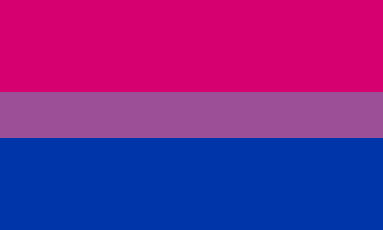
Bisexual Pride Flag: Created by Michael Page, it features three horizontal stripes—pink, purple, and blue—symbolizing attraction to more than one gender.

Pansexual Pride Flag: Designed by various activists, it consists of three horizontal stripes—pink, yellow, and blue—representing attraction regardless of gender.

Non-Binary Pride Flag: Created by Kye Rowan, it features yellow, white, purple, and black stripes, symbolizing genders outside the traditional binary.
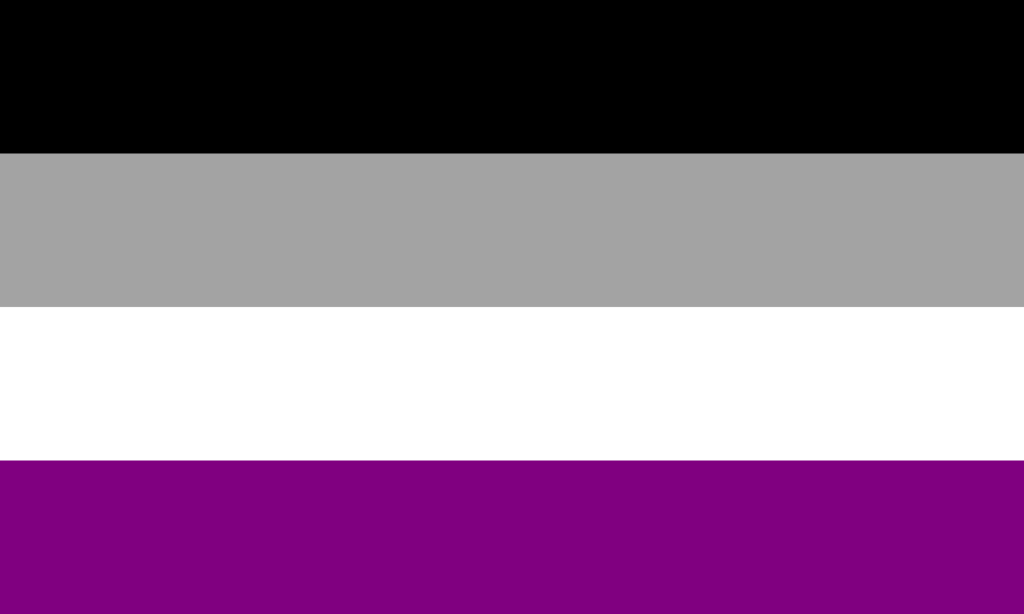
Asexual Pride Flag: Designed by AVEN (Asexuality Visibility and Education Network), it consists of four horizontal stripes—black, gray, white, and purple—representing asexuality and varying degrees of sexuality.

Genderqueer Pride Flag: Designed by Marilyn Roxie, it features lavender, white, and dark green stripes, representing genderqueer, non-binary, and genderfluid identities.

Agender Pride Flag: Created by Salem X, the Agender flag consists of black and white horizontal stripes and a green stripe in the middle, symbolizing a lack of gender.
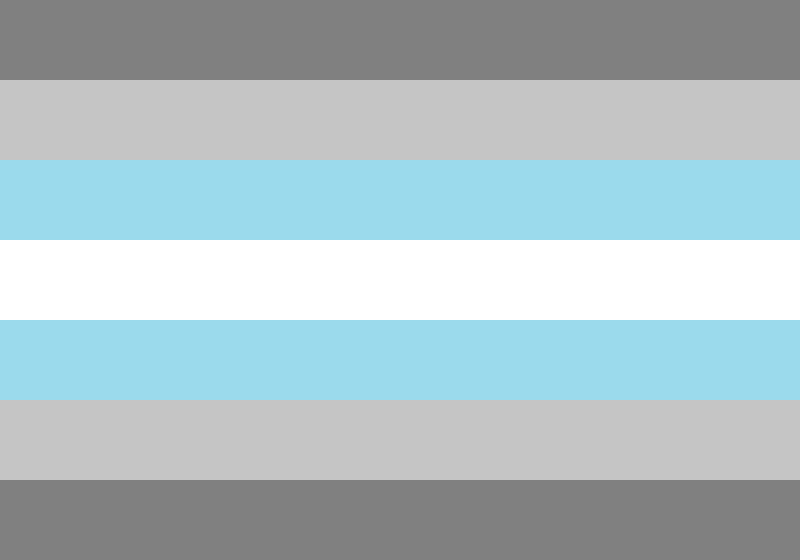
Demiboy Pride Flag: Designed by an anonymous Tumblr user, it consists of light blue, white, and black stripes, representing a partial connection to being male.

Demigirl Pride Flag: Also designed by an anonymous Tumblr user, it features light pink, white, and black stripes, representing a partial connection to being female.
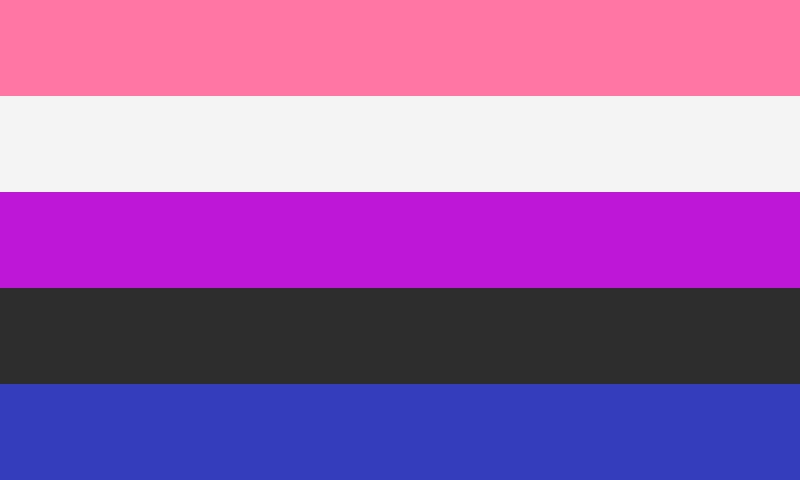
The Genderfluid Flag: designed in 2012 by activist JJ Poole, is a vibrant emblem symbolizing the diverse spectrum of gender identities, with each carefully chosen color representing different facets of the genderfluid experience.
Community Acceptance and Adoption
The Omnisexual Pride Flag has become a powerful emblem of community acceptance and adoption within the LGBTQ+ sphere. Its distinctive combination of light pink, light blue, pink, blue, and dark purple has served as a unifying symbol, fostering a sense of belonging and recognition among individuals identifying as omnisexual. This flag has found resonance within the community, adorning LGBTQ+ spaces, social media profiles, and community events, reflecting a growing acknowledgment of the diverse spectrum of attractions encapsulated by omnisexuality.
The widespread adoption of the Omnisexual Pride Flag signifies a broader movement toward inclusivity, acceptance, and understanding within the LGBTQ+ community. It stands as a visual testament to the ongoing progress in embracing diverse sexual orientations, creating a space where individuals can openly express and celebrate their omnisexual identities.
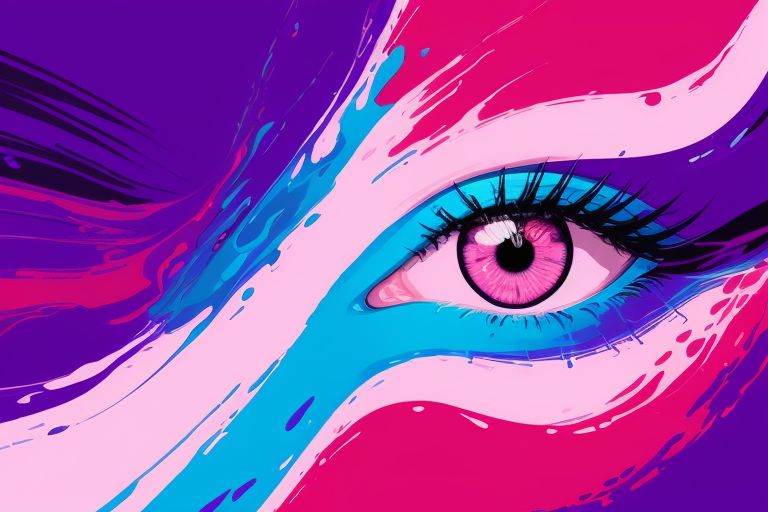
What does it mean to be Omnisexual?
Being omnisexual refers to an individual experiencing romantic, sexual, or affectional attractions to people of all genders and sexes. Omnisexuality is characterized by a capacity for attraction that transcends traditional binary concepts of gender, acknowledging and embracing the diversity of gender identities. Unlike pansexuality, which is often described as gender-blind attraction, omnisexual individuals recognize and are aware of gender differences but are still attracted to individuals regardless of their gender identity.
Omnisexuality, therefore, represents a broad and inclusive spectrum of attraction, encompassing men, women, non-binary individuals, and people with various gender expressions. The orientation emphasizes that the gender of the person is not a limiting factor in forming connections or experiencing attraction. Individuals who identify as omnisexual often appreciate and celebrate the full range of human gender diversity, finding beauty and attraction in the multifaceted nature of gender identities.

What are the different types of Omnisexual people?
Omnisexuality is an umbrella term that encompasses various attractions across all genders. While there isn’t a rigid classification of different “types” of omnisexual people, individuals within the omnisexual spectrum may experience attractions in diverse ways. Some may find themselves attracted to a range of gender expressions, including men, women, and non-binary individuals, while others may navigate attractions fluidly over time.
The key is the capacity for romantic, sexual, or affectional attractions to individuals of any gender. It’s important to recognize the individuality and diversity of experiences within the omnisexual community, acknowledging that each person’s journey is unique.
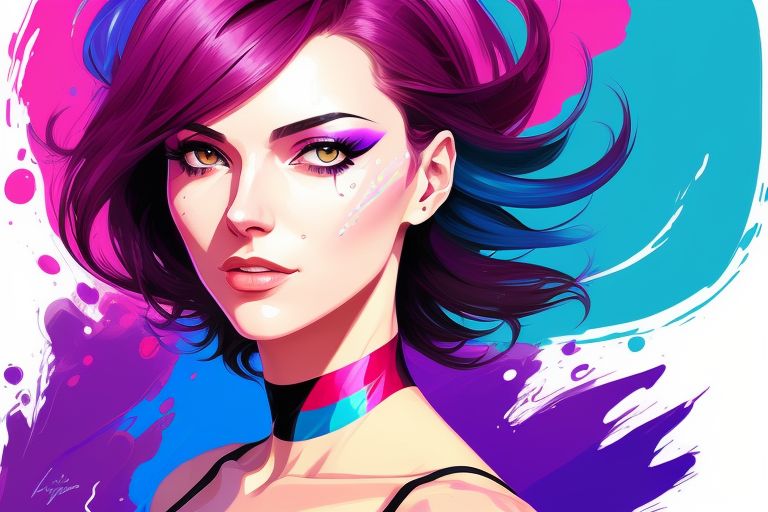
Inclusivity and Representation
Inclusivity and representation are critical aspects for individuals who identify as omnisexual. Seeking inclusive spaces within LGBTQ+ communities, both online and offline, allows for shared experiences and a sense of belonging. Representation matters, and it can be found in diverse media, literature, and advocacy groups that amplify the voices and stories of omnisexual individuals.
LGBTQ+ events, pride celebrations, and initiatives focused on inclusivity contribute to a more representative landscape. Embracing and advocating for inclusivity and representation ensures that the omnisexual community feels acknowledged, understood, and visible within the broader spectrum of sexual orientations.
Support and Resources
One can find support through LGBTQ+ organizations, community centers, and online platforms. Organizations such as The Trevor Project, GLAAD, and local LGBTQ+ community centers often provide resources, helplines, and information to support individuals exploring their sexual orientation. Online forums and social media communities can also offer a space for connecting with others who share similar experiences. Seeking support from friends, family, or mental health professionals who specialize in LGBTQ+ issues is another valuable avenue for guidance and understanding.
Where to buy a Omnisexual flag?
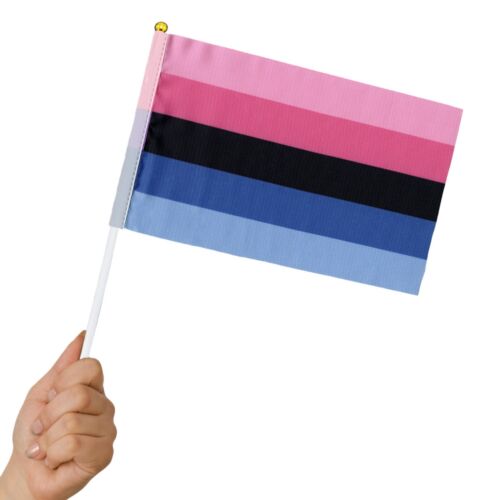
Buy pride flags on Ebay
Ebay has a large collection of HQ and affordable Omnisexual flags!
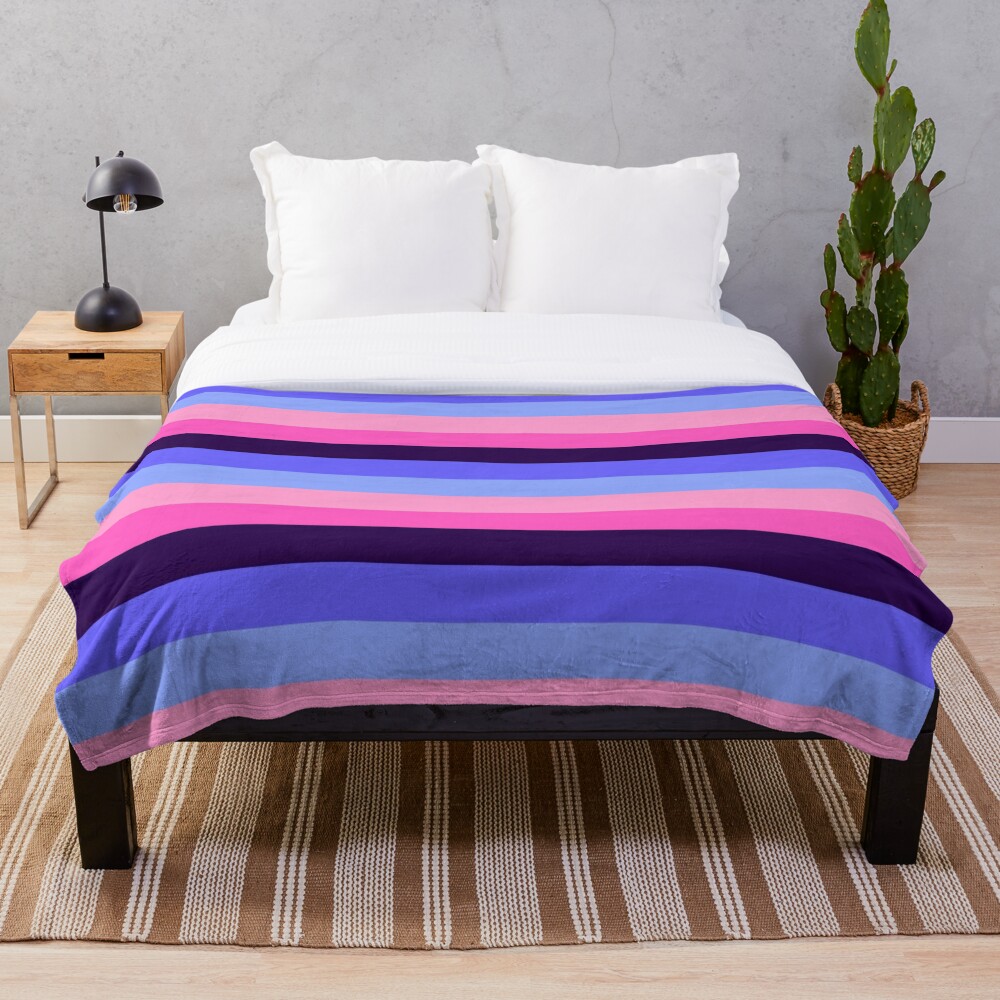
Buy products on Redbubble
Redbubble has a large collection of products with the Omnisexual flag, such as pillows, phone cases, T-shirts, mugs, hats, and much more!

Buy from GrPride
GrPride offers a HQ 3′ x 5′ polyester Omnisexual pride flag!
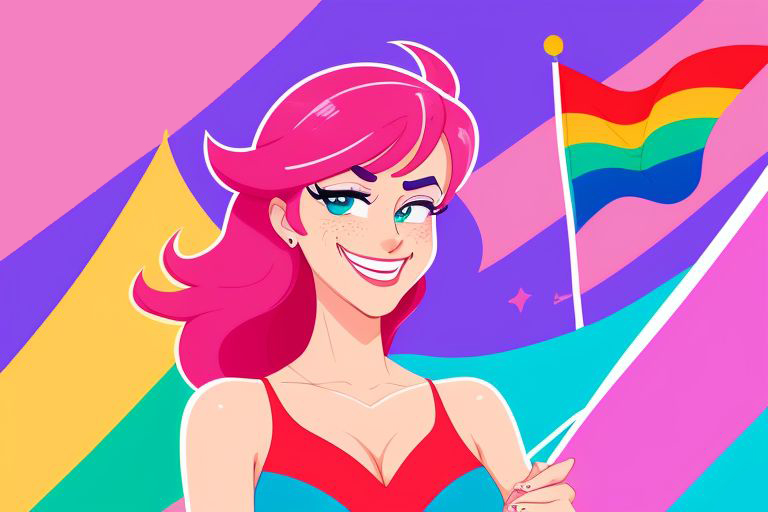
Download the Omnisexual flag.
Can I use the downloaded flag for my personal projects? Yes you can, this flag is in the public domain and you can use it whatever way you like.
How about commercial? The same, you can use it commercially and personally!
How to I know I am Omnisexual?
Discovering and understanding your sexual orientation, including whether you identify as omnisexual, is a personal and introspective process. Here are some considerations that might help you explore your feelings and identity:
- Reflect on Your Attractions: Take some time to reflect on your past and current attractions. Consider the genders of the individuals you’ve been attracted to, and whether you notice patterns that go beyond a specific gender.
- Explore Your Feelings: Pay attention to your emotions and feelings towards people of different genders. If you find that your attractions are not limited to a particular gender and span across a spectrum, it could be indicative of an omnisexual orientation.
- Educate Yourself: Learn more about different sexual orientations, including omnisexuality. Understanding the definitions and experiences of various sexual orientations may help you identify with a particular label or recognize aspects of your own experiences.
- Connect with Others: Engage with the LGBTQ+ community, either online or in person. Hearing others’ stories and experiences can provide insights and perspectives that resonate with your own feelings.
- Seek Support: If you’re comfortable, talk to friends, family, or a mental health professional about your thoughts and feelings. Having a supportive environment can be crucial in understanding and accepting your sexual orientation.
- Give Yourself Time: Sexual orientation can be fluid, and it’s okay not to have all the answers right away. Allow yourself the time and space to explore your feelings and identity at your own pace.
Remember, self-discovery is a unique and ongoing process. Labels like omnisexuality can be helpful for some individuals, but they’re not mandatory. The most important thing is to understand and embrace your own feelings and attractions, whatever they may be. If you find that the label “omnisexual” resonates with your experiences, it can be a useful way to communicate your identity, but it’s entirely up to you to determine what feels right.
Recommended books
There are several books that explore and address the experiences of Omnisexual individuals, offering insights, narratives, and perspectives that can be both validating and enlightening. Here are some recommendations:
- “Stone Butch Blues” by Leslie Feinberg
This novel is a classic in LGBTQ literature and follows the life of a gender-nonconforming protagonist, exploring themes of identity and resilience.
- “Nevada” by Imogen Binnie
This novel centers around a transgender protagonist and delves into themes of self-discovery, identity, and the challenges of navigating a genderqueer existence.
- “Gender Outlaws: The Next Generation” edited by Kate Bornstein and S. Bear Bergman
This anthology features diverse voices within the LGBTQ community, including essays and narratives that encompass a wide range of gender identities and expressions. - “Genderqueer: Voices Beyond the Sexual Binary” edited by Joan Nestle, Clare Howell, and Riki Wilchins
This collection brings together personal narratives, essays, and poems that explore the experiences of genderqueer individuals, providing a rich and varied perspective. - “They/Them/Their: A Guide to Nonbinary and Genderqueer Identities” by Eris Young
A comprehensive guide that explores nonbinary and genderqueer identities, offering insights and information for those seeking to understand or navigate these experiences. - “Trans Bodies, Trans Selves” edited by Laura Erickson-Schroth
This resource covers a wide range of topics related to transgender and gender-nonconforming experiences, offering practical information and personal narratives. - “The ABC’s of LGBT+” by Ashley Mardell
Geared towards a younger audience, this book provides an accessible and informative guide to various aspects of the LGBTQ+ spectrum, including Omnisexuality. - “Trans Like Me: Conversations for All of Us” by C.N. Lester
C.N. Lester, a nonbinary activist, explores the complexities of gender identity in this thought-provoking book, combining personal experiences with broader discussions about gender. - “The Art of Being Normal” by Lisa Williamson
A fictional narrative that follows the lives of two transgender teens, this novel provides a relatable and engaging story that can resonate with individuals exploring their own identities. - “Beyond Magenta: Transgender Teens Speak Out” by Susan Kuklin
This book shares the stories of transgender and genderqueer teens, providing a platform for their voices and experiences.
These books cover a range of genres and styles, offering Omnisexual individuals and those seeking to understand more about gender diversity a diverse and enriching reading list. It’s essential to explore various perspectives to gain a more comprehensive understanding of the fluidity and diversity within gender identities.
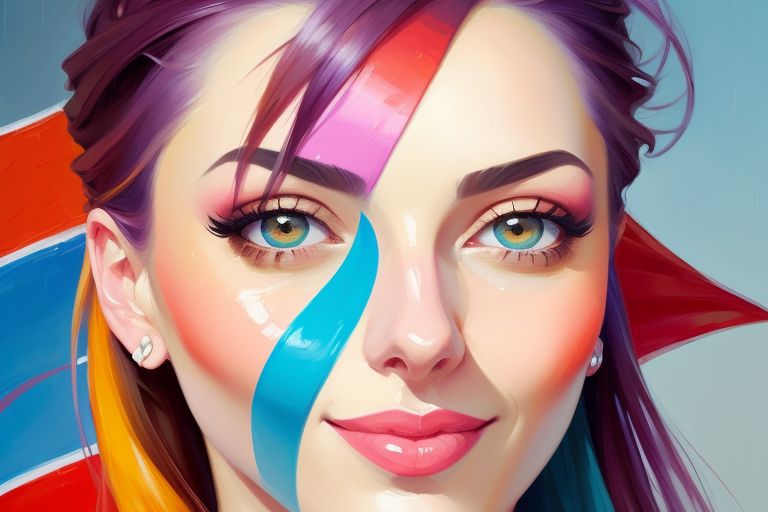
Educational content and resources:
Explore the following collection of resources and websites tailored to provide valuable support and information for individuals navigating Omnisexual identities. Whether you are seeking community connections, educational materials, or assistance in understanding and expressing your gender identity, these platforms have been curated to offer a diverse range of perspectives and resources.
- Nonbinary.org
- Offers a wealth of information on nonbinary and genderqueer identities.
- GLAAD’s Tips for Allies of Transgender People
- Provides guidance for allies of transgender and gender nonconforming individuals.
- Gender Diversity
- Offers resources and support for families and children exploring gender identity.
- National Center for Transgender Equality (NCTE)
- Advocacy organization working towards policy reform and transgender equality.
- The Trevor Project
- A crisis intervention and suicide prevention organization for LGBTQ+ youth.
- Transgender Equality
- Provides resources, policy advocacy, and educational materials.
- Genderqueer.me
- A resource hub with articles, stories, and information on genderqueer identities.
- Autostraddle’s “Queer Your Tech”
- A tech and culture column that often includes gender-related content.
- Trans Lifeline
- A crisis hotline and resource for transgender individuals.
- PFLAG
- Offers support and resources for LGBTQ+ individuals, their families, and allies.
- Gender Diversity: Beyond the Binary
- A TED Talk playlist featuring discussions on gender diversity.
- Human Rights Campaign (HRC)
- Advocacy and educational resources for LGBTQ+ rights.
- Queer Books for Teens
- A curated list of LGBTQ+ literature, including Omnisexual themes.
- Transgender Map
- A comprehensive guide covering various aspects of transgender and genderqueer identities.
- The Gender Book
- An online resource and book providing information on gender diversity.
- MyPronouns.org
- Offers guidance on using and respecting personal pronouns.
- National LGBTQ Task Force
- Advocacy organization working towards justice and equality for LGBTQ+ individuals.
- The Agender Project
- A platform for sharing experiences and resources related to agender identities.
- The Queer Encyclopedia
- A comprehensive resource with entries on a wide range of LGBTQ+ topics.
- Astraea Lesbian Foundation for Justice
- A foundation supporting LGBTQ+ rights globally, including gender-related issues.
Conclusion

In summary, omnisexuality is the attraction to people of all genders, with varying influences based on gender or sex. Preferences in attraction may differ, and while some omnisexual individuals may lean towards certain genders, it’s not a universal aspect. Created in 2015 by Pastelmemer, the Omnisexual Pride Flag features light pink and blue for the gender spectrum, pink for femininity, blue for masculinity, and dark purple for those outside these categories.

FAQs and Common Misconceptions

What does each color on the Omnisexual Flag represent?
The colors on the Omnisexual Pride Flag each hold specific meanings. Light pink and light blue collectively represent the gender spectrum, while pink signifies attraction to femininity and women. Blue represents attraction to masculinity and men, and dark purple symbolizes attraction to individuals whose gender falls outside these categories, including non-binary individuals.
Who designed the Omnisexual Flag, and when was it created?
The Omnisexual Pride Flag was designed by @pastelmemer in 2015. Although the creator did not provide an official explanation for the colors, a common interpretation has emerged within the omnisexual community, as discussed earlier.
How is the Omnisexual Flag used within the LGBTQ+ community?
The Omnisexual Pride Flag is widely used within the LGBTQ+ community as a symbol of unity and inclusivity. It can be seen at LGBTQ+ events, on social media profiles, and in various community spaces. Its usage fosters visibility and recognition for individuals who identify as omnisexual, providing a visual representation of their sexual orientation.
Are there other related flags and symbols within the LGBTQ+ community?
Yes, there are numerous other flags and symbols representing various sexual orientations and gender identities within the LGBTQ+ community. Examples include the LGBTQ+ Pride Flag, Bisexual Pride Flag, Pansexual Pride Flag, Transgender Pride Flag, and many more. Each flag and symbol aims to provide visibility and recognition for different segments of the LGBTQ+ spectrum.
Can I create my own DIY version of the Omnisexual Flag?
Absolutely! Many individuals create their own DIY versions of LGBTQ+ flags to express their identity or support for the community. You can use the specified colors—light pink, light blue, pink, blue, and dark purple—and arrange them horizontally to create a personalized Omnisexual Pride Flag. Creating DIY versions allows for individual expression and promotes a sense of inclusivity.
What is the significance of the pink color on the flag?
The pink color on the Omnisexual Pride Flag represents attraction to femininity and women. It serves as a visual acknowledgment and celebration of the diverse attractions within the feminine gender identity. The inclusion of pink emphasizes the broad spectrum of attractions within omnisexuality, transcending traditional gender norms.
How has the Omnisexual Flag contributed to community acceptance and adoption?
The Omnisexual Pride Flag has played a pivotal role in fostering community acceptance and adoption by providing a visible symbol for individuals who identify as omnisexual. Its widespread recognition at LGBTQ+ events and online platforms has created a sense of unity and pride within the community, contributing to broader acceptance and understanding of diverse sexual orientations.
How can the Omnisexual Flag contribute to promoting equality and understanding?
The Omnisexual Pride Flag promotes equality and understanding by visually communicating the inclusivity of omnisexuality. Its representation of attractions to all genders encourages conversations around the fluidity of sexual orientations, fostering understanding and acceptance within the broader LGBTQ+ community and beyond.
Are there support networks and resources available for individuals exploring their gender identity?
Yes, there are numerous support networks and resources available for individuals exploring their gender identity. LGBTQ+ organizations, online forums, and mental health professionals specializing in gender identity provide valuable support. Local LGBTQ+ community centers often offer resources and information to help individuals navigate their gender identity journey.
What is the exact shade of blue in the Omnisexual Flag?
The exact shade of blue in the Omnisexual Pride Flag is not standardized, as interpretations and representations can vary. It generally symbolizes attraction to masculinity and men, contributing to the overall message of inclusivity within omnisexuality.
What are the different types of Omnisexual people?
Omnisexuality, as an orientation, encompasses a wide range of attractions across all genders. There isn’t a strict classification of different types of omnisexual people, as individual experiences and attractions can be diverse and fluid. The common thread is the capacity for romantic, sexual, or affectional attractions to people of all genders.
What is the Omnisexual Flag?
The Omnisexual Pride Flag is a symbol designed to represent individuals who identify as omnisexual. Created by @pastelmemer in 2015, it features horizontal stripes in light pink, light blue, pink, blue, and dark purple. Each color is interpreted to symbolize attractions to different genders, emphasizing the inclusive nature of omnisexuality. The flag serves as a visible and powerful representation of the omnisexual community, promoting visibility, acceptance, and pride.
What does the Omnisexual Flag mean?
The Omnisexual Pride Flag is a symbolic representation of omnisexuality, an orientation characterized by romantic, sexual, or affectional attractions to people of all genders. The flag’s colors—light pink, light blue, pink, blue, and dark purple—symbolize various aspects of attraction, from femininity and masculinity to non-binary identities, emphasizing the inclusivity inherent in omnisexuality.
What is the role of intersectionality in the LGBT and Omnisexual communities?
Intersectionality recognizes that individuals have multiple social identities that intersect and interact. In the LGBT and omnisexual communities, intersectionality acknowledges that experiences of discrimination or privilege can vary based on factors such as race, ethnicity, socioeconomic status, and more. It’s crucial to consider these intersections to create more inclusive and understanding spaces.
Are there specific pronouns I should use when referring to a Omnisexual person?
Pronouns are not determined by sexual orientation, including omnisexuality. Pronoun usage is personal and is typically related to an individual’s gender identity. Respectfully using the pronouns someone provides is a way to affirm their gender identity and show support.
How does one come out as LGBT or Omnisexual?
Coming out is a personal journey, and there is no one-size-fits-all approach. It involves sharing one’s sexual orientation or gender identity with others. It’s important to choose a time and place that feels safe, and to surround oneself with supportive individuals. Resources, such as coming-out guides and LGBTQ+ support networks, can offer guidance.
How can I be a supportive ally to someone who is LGBT or Omnisexual?
Being a supportive ally involves listening, learning, and showing empathy. Educate yourself about LGBTQ+ issues, use inclusive language, and be open to conversations. Respect individuals’ pronouns and identities, challenge discrimination when you encounter it, and create a safe and affirming space for open dialogue.
Is being transgender the same as being Omnisexual?
No, being transgender and omnisexual are distinct aspects of identity. Being transgender refers to a person whose gender identity differs from the sex assigned to them at birth. Omnisexuality, on the other hand, relates to the capacity for attraction to people of all genders. These terms pertain to different aspects of identity—gender identity and sexual orientation, respectively.
How to make omnisexual flag with emojis
Creating an Omnisexual flag with emojis can be a fun and creative way to express support. You can use emojis like 🌈 for the LGBTQ+ community, 💖 and 💙 to represent the gender spectrum, and 🟪 for non-binary attraction. Experiment with various combinations to craft an emoji representation that captures the essence of omnisexuality.


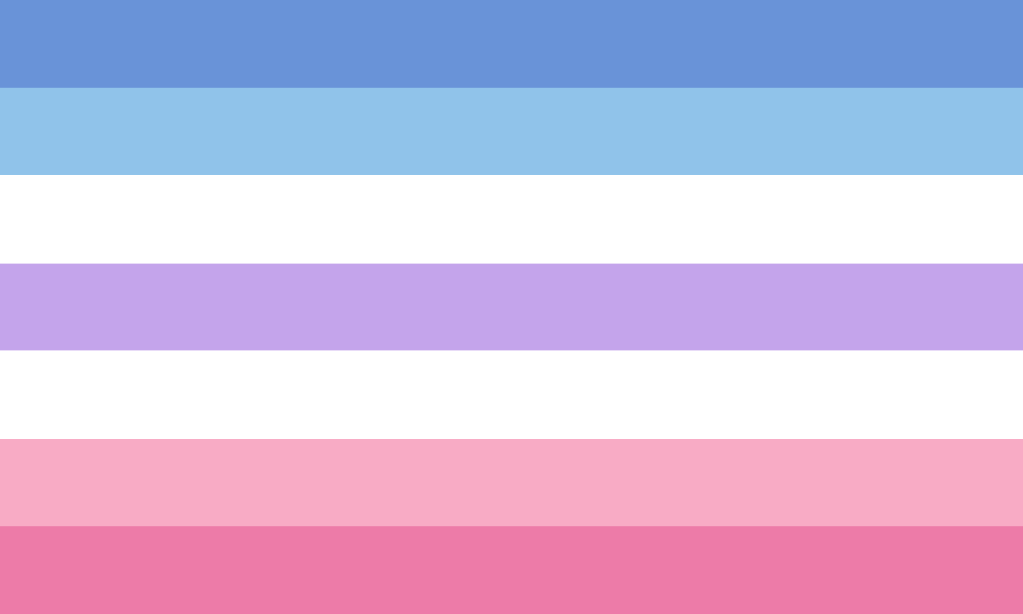


Leave a comment